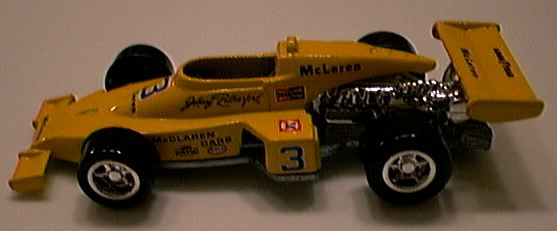 . . 1974 McLaren Indy Car and same car in 1976 colors by Johnny Lightning McLaren's Open-Wheel Racing Cars in Miniature By David Cook McLaren cars are very much in the sporting news lately, having won the Formula One drivers championship the last two years for Mika Hakkinen. The team's story begins of course with Bruce McLaren. A New Zealand junior champion, he was brought to England at a young age by Jack Brabham to partner him on the Cooper F1 team in 1959. Bruce took to top-level racing right away and still holds the record as the youngest-ever Grand Prix winner at 22 years old. After Brabham left to build his own cars, his young student continued on as number one driver for Cooper. But Bruce's ambitions were similar to Brabham's and he started McLaren Cars Ltd. in 1966. The first-ever McLaren F1 car was mostly an under-powered flop, but at least they were in the game. The example shown here, by Penny is a fairly good representation of the M2B but the giant rubber wheels seem out of proportion. While Formula One proved a tough nut to crack, the team was off to a great start in North America, winning the first of five Can-Am championships, 1967 through 1971. (See TofTC Nov. '99) Finally powered by Ford-Cosworth engines, the team won its first F1 races in 1968 and was in the hunt for the title. But Team McLaren's ambition and spirit were almost boundless and transcended the tragic death of its founder in a testing accident in 1970. Cars were constructed for an assault on the Indy 500, the first win coming in 1972. The Johnny Lightning car pictured here is a beautiful representation of an M16, the winner in 1974 and 1976 for the great Johnny Rutherford. Subsequent models raced at Indy through 1981. 1974 also saw the team's first F1 championship with Emerson Fittipaldi at the wheel of an M23 pictured here by Polistil. The M23 also carried James Hunt to the championship in 1976, after a titanic struggle with Niki Lauda and Ferrari. Hunt's car is also pictured here, again by Polistil. Check out the evolution of this model over two seasons. The M23 is one of the all-time great F1 cars, with eighteen wins and two championships from 1973 through 1976. In the hyper-competitive world of F1, however, no one stays on top for long. The team's next model, the M26 pictured here by Tomica, scored only three wins in 1977. Left behind by Ferrari 12-cylinder power and Lotus ground-effects technology, the team went into decline. To turn things around, McLaren's primary sponsor, Marlboro, forced a merger with the new-blood team Project Four. This new partnership was re-named McLaren International and cars were called MP4s. A long trek back to the front of the grid began. One of the first MP4s is pictured here, again by Polistil. The team's new designer, John Barnard, pioneered the use of carbon-fiber chassis. With a design team in place, new driving talent was added: an "un-retired" Niki Lauda in 1982 and Alain Prost in 1984. A new turbo-charged engine especially designed by Porsche with TAG money brought McLaren back to the top: a world championship for Lauda in 1984, then two in a row for Prost in 1985 and 1986. The Majorette model pictured here is a good example of the cars from these years. When the Porsche engines reached the end of their competitive life, McLaren switched to Honda power and added the super-talented Ayrton Senna to partner Prost. It was the greatest possible combination: the two best drivers and the most powerful engines meant that McLaren steamrollered its opposition four years in a row, 1988 (when McLarens won every race but one) through 1991. This is the time when Senna's god-like reputation was made. But the team wasn't big enough to contain these two giant egos. Prost left for Ferrari after winning the championship in 1989. The Tomica model shown here is representative of the cars from this era. Honda chose to withdraw from racing after 1992 and McLaren fell back on Ford power. Michael Andretti was brought in to partner Senna. The great Brazilian refused to sign a contract for the season, opting for a race-to-race deal demanding a cool $1 million per event! The MP4/8 pictured here by Minichamps won a few races but could not match its Renault-powered competitor, Williams. The team drifted the next few years in search of competitive power, trying first Peugeot, then Illmor-Mercedes engines. This combination clicked, and McLaren came on strong again, winning driver's championships for Mika Hakkinen in 1998 and 1999. The beautiful Siku model shown here is actually a very good representation of today's McLarens but with a generic paint job to avoid any licensing problems. Under present managing director Ron Dennis, McLaren looks set to remain
at or near the top for some time. While the team's main focus is Formula
One, they did take to time to build the BMW-powered F1 sports car. The model
pictured here by Minichamps is the street version, retailing for around
$500,000! A racing version won LeMans in 1995. |
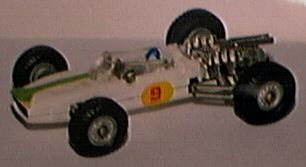 1966 McLaren M2B by Polistil  1975 F1 M 23 by Polistil 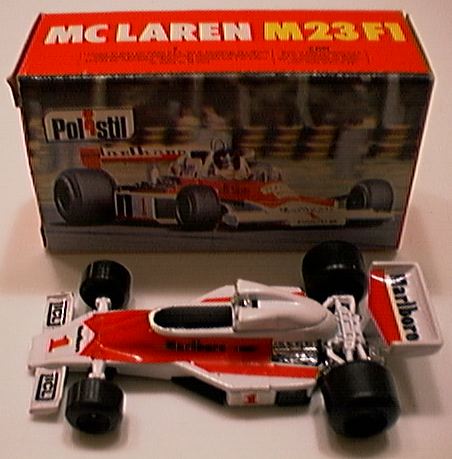 1976 F1 M 23B by Polistil 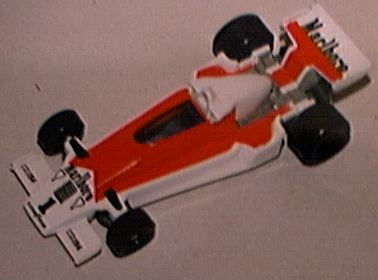 1978 M 26 by Tomica 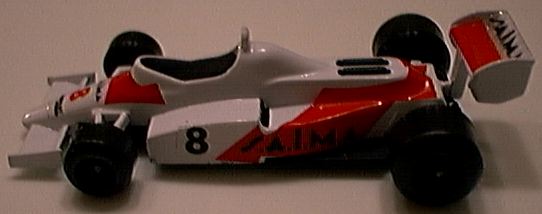 1982 MP4 by Polistil 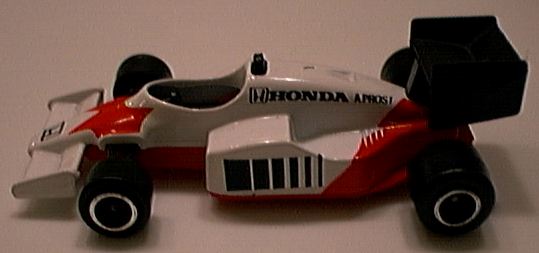 1984 F1 McLaren by Majorette 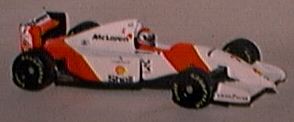 1993 McLaren MP4/8 by Minichamps 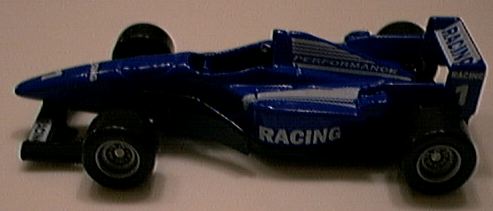 1997 McLaren by Siku |
